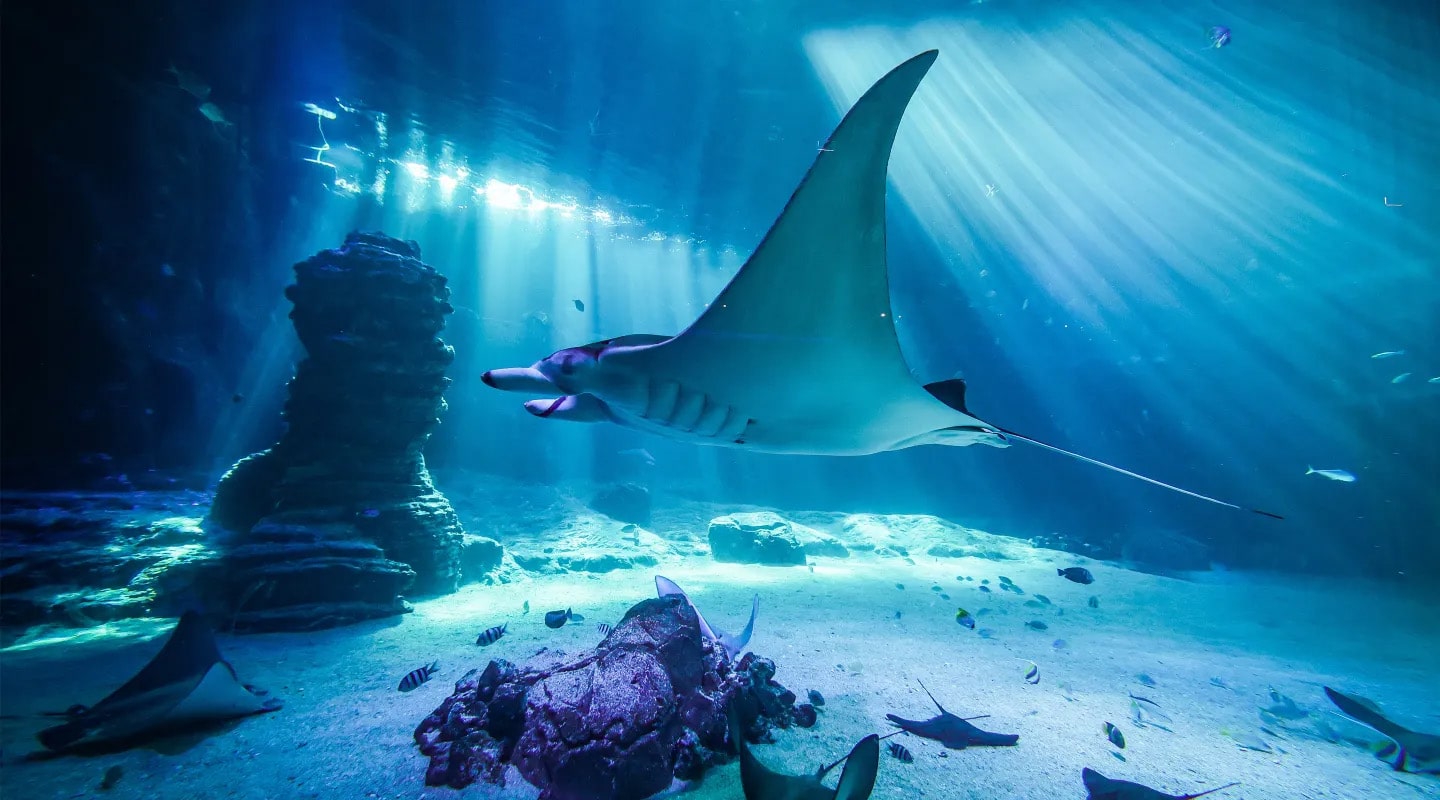
36 interesting facts about manta rays
- 👁️ 319
Manta rays, majestic giants of the ocean, glide through the water with an elegance that belies their size. These gentle behemoths have fascinated humans for centuries, not only for their impressive appearance but also for their intriguing behaviors and mysterious habits. Found in tropical, subtropical, and temperate waters around the world, manta rays play a crucial role in the marine ecosystem. Despite their size, much about these creatures remains a mystery, making them a subject of ongoing research and conservation efforts. Let’s dive into some interesting and informative facts about manta rays that showcase their significance in the marine world, their unique characteristics, and the efforts to preserve their populations.
- Manta rays belong to the family Mobulidae, which includes two species: the reef manta ray (Mobula alfredi) and the giant manta ray (Mobula birostris).
- The giant manta ray can reach a wingspan of up to 7 meters (23 feet), making it the largest species of ray.
- Manta rays do not have a stinger or a barb on their tails, unlike many other ray species.
- They are filter feeders, consuming large quantities of plankton and small fishes by swimming with their mouths open.
- Manta rays have the highest brain-to-body weight ratio of any cold-blooded fish, suggesting a high level of intelligence.
- They are known to exhibit behaviors such as breaching, where they leap out of the water, possibly to remove parasites or communicate.
- Manta rays have unique spot patterns on their undersides, which researchers use to identify individuals, similar to fingerprints in humans.
- The lifespan of a manta ray is estimated to be about 50 years, though research on their aging process is still ongoing.
- Manta rays are highly migratory, traveling across oceans to find food and warmer waters.
- They are solitary creatures but can often be found feeding in groups where plankton concentrations are high.
- Manta rays give birth to live young, called pups, after a gestation period of around 13 months.
- Female manta rays typically give birth to one pup every 2 to 3 years, contributing to their slow reproductive rate.
- The International Union for Conservation of Nature (IUCN) lists the giant manta ray as “Vulnerable” and the reef manta ray as “Near Threatened.”
- Manta rays are threatened by fishing, both targeted and as bycatch, as well as habitat degradation.
- Their gill plates are highly valued in traditional Chinese medicine, driving illegal trade and overfishing.
- Manta rays have been observed visiting cleaning stations, where small fish remove parasites from their skin.
- They are capable of coordinated and cooperative feeding strategies, such as “cyclone feeding,” to maximize plankton intake.
- Despite their size, manta rays are agile swimmers, able to perform somersaults and barrel rolls.
- Manta rays have a protective mucus coating on their skin, which can be harmed by human touch.
- They use their cephalic fins, which are rolled up when swimming and unrolled when feeding, to direct water and food into their mouths.
- In some cultures, manta rays are considered sacred and are protected by traditional beliefs and practices.
- Manta rays are known to engage in complex social interactions and may recognize other individuals.
- The largest known aggregation of manta rays occurs in the waters of Hanifaru Bay, Maldives, where hundreds can gather to feed.
- Manta rays are susceptible to entanglement in fishing nets and lines, which can cause serious injuries or death.
- Research on manta rays is challenging due to their elusive nature and the depths at which they often reside.
- They possess a large, forward-facing mouth, which distinguishes them from other rays that have ventrally located mouths.
- Satellite tagging has revealed that some individual manta rays undertake long-distance migrations of thousands of kilometers.
- Manta rays contribute to ecotourism, with many divers and snorkelers eager to observe them in their natural habitats.
- Conservation efforts for manta rays include the creation of marine protected areas and regulations on international trade.
- Climate change and ocean acidification pose additional threats to manta ray populations by affecting their planktonic food sources.
- Manta ray research and conservation are supported by citizen science projects, where divers submit photos and sightings to global databases.
- They have a slow growth rate, with some individuals not reaching maturity until they are 8 to 10 years old.
- The presence of manta rays is often an indicator of healthy marine ecosystems.
- Manta rays use visual and tactile cues for communication and navigation within their environments.
- In 2013, manta rays were included in Appendix II of the Convention on International Trade in Endangered Species (CITES), regulating their international trade.
- Advanced techniques, such as drone surveillance and underwater cameras, are increasingly used for studying manta ray populations and behaviors.
Manta rays, with their gentle nature and awe-inspiring presence, are among the ocean’s most fascinating inhabitants. Their unique biological features, complex behaviors, and the challenges they face from human activities highlight the importance of ongoing research and conservation efforts. Protecting manta rays and their habitats is crucial for maintaining the balance of marine ecosystems and ensuring that future generations can continue to marvel at these magnificent creatures. As we learn more about manta rays, we deepen our understanding of the marine world and our role in preserving its diversity and beauty.
Manta rays, majestic giants of the ocean, glide through the water with an elegance that belies their size. These gentle behemoths have fascinated humans for centuries, not only for their impressive appearance but also for their intriguing behaviors and mysterious habits. Found in tropical, subtropical, and temperate waters around the…